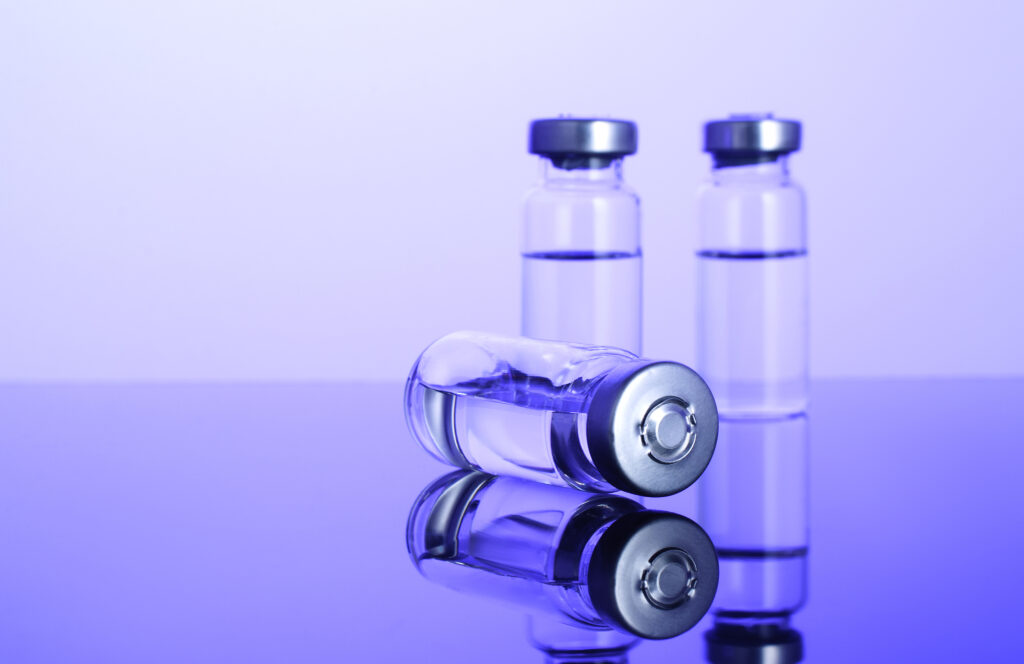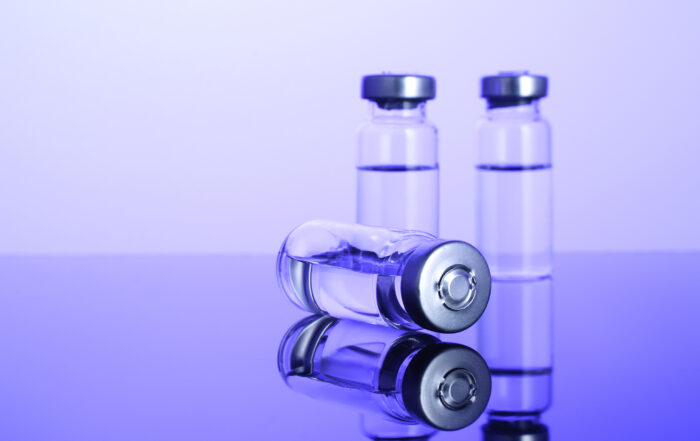
Federal Funding of Medical Countermeasures: Opportunities, Risks, and Enforcement Trends
By John Bueker, Beth Weinman & Jenna McCarthy
I. Introduction
The federal COVID-19 pandemic response has led to a massive wave of federal spending on the development, clinical study, production, and supply of medical countermeasures, including vaccines, therapeutics, diagnostic tests, and ancillary vaccine/therapeutic materials. As the COVID-19 virus evolves towards endemic status, federal spending has shifted away from simply reacting to the mutating virus and towards preparing for the next pandemic. The government is prioritizing investment both in research and development efforts that can be marshalled to fight a future pandemic, and in ensuring a sufficient supply of critical medical products more generally. However, significant federal spending is usually accompanied by intense scrutiny, and the high-profile nature of many pandemic-era funding initiatives may heighten risk. Supply contracts for medical countermeasures as well as contracts for grants and loans have come with numerous conditions, including strict compliance with U.S. Food and Drug Administration (FDA) research and other regulatory requirements. If patient safety issues arise or potential non-compliances with FDA requirements are uncovered in connection with research, manufacturing, or marketing of these important medical products, the federal government will undoubtedly look to the False Claims Act (FCA) to try and recover money paid out by federal programs. In addition, failure to comply with contractual obligations, including those regarding allowable expenses, can also raise FCA risk. Life sciences companies should be mindful of both the opportunities and risks that are associated with accepting government funding for pandemic preparedness initiatives and ensure that their compliance infrastructure is intently focused on compliance with both regulatory and contractual commitments.
II. Pandemic Preparedness Funding
Since early 2020, media headlines have touted significant federal grants, loans, and supply contracts issued to facilitate the development and availability of COVID-19 medical countermeasures.[1] Due to disparate funding sources and modifications or cancellations of many contracts and loans, it is difficult to calculate the total amount of federal funding expended on the development and purchase of covered countermeasures with precision. Sources estimate that as of March 2021, Operation Warp Speed alone resulted in the expenditure of at least $18 billion on COVID-19 vaccine development.[2] One source estimates that COVID-related procurement from both civilian and defense agencies totaled $58.7 billion in fiscal year 2021.[3] In September 2022, the National Institutes of Health announced that it would provide up to $300 million in funds from the American Rescue Plan Act of 2021 to support the next generation of COVID-19 tests, as part of its ongoing Rapid Acceleration of Diagnostics initiatives.[4]
Pandemic funding measures have taken many different forms, and some programs have been more successful than others. High dollar federal contracts were awarded for the supply of vaccines, therapeutics, ancillary vaccine and therapeutic materials, and diagnostic testing.[5] Both the Trump and Biden Administrations have leveraged the Defense Production Act (DPA) to provide funding for COVID-19 medical countermeasures, to mixed results.[6] In May 2020, then-President Trump signed an executive order that provided the U.S. International Development Finance Corporation (DFC) tools under the DPA to finance the domestic production of strategic resources needed to respond to the COVID-19 outbreak and to strengthen relevant domestic medical supply chains, but the executive order creating the DFC loan program expired in March 2022, and U.S. Government Accountability Office (GAO) reports show that the DFC failed to actually issue any loans as of late 2021.[7] Companies that wish to take advantage of government funding should be aware of the risk that such loans may never come to fruition.
While some approaches to funding COVID-19 medical countermeasures have been more successful than others, the federal government has generally succeeded in incentivizing the development and supply of critical medical products and thereby mitigating some of the effects of the immediate COVID-19 crisis. Now that several effective vaccines have been approved, and the virus may be transitioning to an endemic state, the approach to funding is also at a point of transition. The federal government appears to be in the process of taking stock of lessons learned from its COVID-19 response and determining how to optimize tools developed to fight COVID-19 as it prepares for the next pandemic while seeking to build medical product supply chain resilience more generally.
III. New Wave of Funding—Opportunities and Risks
A. Opportunities
In February 2021, President Biden signed an executive order directing his administration to launch an immediate 100-day review and strategy development process to address vulnerabilities in the supply chains of four key product sectors, including pharmaceuticals.[8] Concerns about supply chain vulnerabilities exacerbated by the COVID-19 pandemic have led to an increased focus on the need to shore up and expand domestic manufacturing both in connection with the pandemic and beyond. The executive order and other actions taken by the Biden Administration reflect an increased focus on the need to fortify and expand domestic manufacturing, especially of pharmaceuticals and active pharmaceutical ingredients (API). The 100-day report, released in June 2021, includes a report authored by the U.S. Department of Health and Human Services (HHS) and FDA[9] that continues to emphasize government willingness to leverage the DPA, use targeted investments and financial incentives, and enter into private–public partnerships in order to strengthen domestic supply chains.[10] A one-year follow up report released in February 2022 highlights accomplishments and continues to focus on building supply chain resilience for the future.[11]
Similarly, in July 2021, the Biden Administration outlined its “National Strategy for a Resilient Public Health Supply Chain.”[12] This strategy document, and its follow-up one-year report, continues to prioritize building out the public health supply chain to protect Americans from the next pandemic and other biological incidents, showing that federal funding for medical countermeasures will continue to flow.[13]
The Biden Administration has also allocated funds for future medical countermeasures and pandemic preparation by again using the DPA along with other funds. The American Rescue Plan Act of 2021 became law in March 2021 and allocates $50 billion in the Public Health and Social Services Emergency Fund until September 24, 2024 for a broad set of medical countermeasures and surge capacity, as well as another $10 billion until September 30, 2025 for activities under the DPA with respect to medical supplies and equipment for a pandemic.[14] After September 30, 2022, funds appropriated under the DPA can be used to meet critical public health needs with respect to any pathogen that the President has determined has the potential for creating a public health emergency. The Department of Education also held a competition to address critical manufacturing and supply issues, and, as part of this competition, awarded $52.9 million to Virginia to expand the domestic supply chain for essential medicines and API.[15] Going forward, companies may be more likely to receive funding for the manufacture and development of medical countermeasures not specifically linked to COVID-19 and for the onshoring of critical medical product manufacturing.
B. Risks
The life sciences industry is a heavily regulated industry and manufacturers of FDA-regulated products are well aware of both the risks of non-compliance and the various enforcement tools that FDA, the U.S. Department of Justice (DOJ), and other regulators can bring to bear, including initiation of an FCA action grounded in violations of underlying FDA regulatory requirements. However, these risks are likely to be even greater in the context of a deadly pandemic, and extraordinary federal spending focused on saving lives and preventing the types of medical product shortages and healthcare system overload we saw as the COVID-19 crisis unfolded. Further, throughout the COVID-19 pandemic, manufacturers faced unique pressures to develop products in expedited time frames and to rely on abbreviated review processes like emergency use authorizations (EUAs), which may have led to mistakes or shortcuts. Any perception that companies or individuals funded by the government intentionally misused funds or maintained a cavalier attitude towards compliance at a time of national crisis may be viewed as a grave breach of the public trust and lead to enhanced enforcement consequences.
DOJ is already paying significant attention to COVID-19 fraud enforcement efforts, to date focused most prominently on fraud related to Paycheck Protection Program loans and pandemic-era economic assistance programs.[16] DOJ has convened a task force specifically for COVID-19 fraud, and Congress formed a subcommittee on the COVID-19 crisis.[17] Economic assistance programs may be low-hanging fruit for DOJ and Congress, but given the large amount of money spent on medical countermeasures, we expect the focus to shift over time. We have already seen congressional and media attention to the practice of selecting recipients of COVID funding. In May 2020, Fillakit, LLC received a $10 million contract from FEMA to manufacture COVID-19 testing supplies seven days after the company formed; Fillakit later allegedly provided FEMA with plastic tubes that were unsuitable for laboratory use and potentially contaminated.[18] A group of House members subsequently sent a letter to various agency heads promising that a congressional subcommittee would investigate the federal government’s efforts to procure certain medical countermeasures, and mentioned Fillakit.[19] In addition, press reports have highlighted government concerns with respect to manufacturing practices in connection with two COVID-related medical products.[20] The statute of limitations under the Federal Food, Drug, and Cosmetic Act (FDCA) is five years and the FCA is six years, and limitations periods can be extended in certain circumstances; thus, we may see more enforcement in the future. And, as previously noted, it appears that federal money is continuing to flow.
In this context, companies accepting federal money for the development and supply of medical countermeasures should be mindful of the risks of possible false claims. An FCA claim has four elements: falsity, materiality, scienter, and causation.[21] There are a variety of underlying legal theories and factual scenarios under which a claim can be considered false, such as: fraud in the inducement (e.g., allegedly material misrepresentations leading to an award of grants, loans, or supply contracts); fraud on the FDA (e.g., misrepresentations to agency material to obtaining authorization or approval); false or misleading representations as to product safety or efficacy; violations of regulatory reporting or other manufacturing practice requirements; mismanagement of construction or renovations of facilities needed to manufacture medical products, supplies, or components; billing for defective or deficient products; or billing for impermissible costs/use of falsified invoices. For each of these scenarios, the question that would remain is whether the falsity is “material” to the government decision and whether any company or individual caused the filing of the false claim notwithstanding awareness of the falsity.
FCA investigations may also take place in parallel with criminal investigations of violations of the FDCA and related Title 18 criminal theories. Generally speaking, to prove a misdemeanor violation of the FDCA, the government need only show that a person violated or caused the violation of one of an enumerated list of prohibited acts outlined in 21 U.S.C. § 331. No showing of intent is required to establish a misdemeanor criminal violation, though to prove a felony, the government must prove that the violation was committed with the intent to defraud or mislead. Many commonly charged prohibited acts rest on adulteration or misbranding theories tied to regulatory violations, like failing to make required reports or maintain required records, introducing products into interstate commerce without proper clearance or approval, violating manufacturing practice requirements, violating labeling requirements, and refusing or obstructing inspection, among other theories.[22] DOJ often looks to other related enforcement theories as well in these types of cases, most commonly mail and wire fraud, and conspiracy to commit an FDCA violation or to defraud FDA.
We can anticipate a number of scenarios likely to invite attention from FDA and DOJ.
a. Manufacturing Issues
First, manufacturing problems can lead to the production of FDA-regulated medical products that fail to meet specifications, are defective, cannot be used for their intended purpose, or can or do cause harm. Further, as FDA ramps up inspections, we may see the issuance of FDA Form 483s to medical countermeasure manufacturers identifying potential non-compliance with current good manufacturing practices (cGMPs) and quality system regulations. To the extent those inspections focus on recipients of massive federal funding or contracts, and the non-compliances appear to impact product quality or patient safety, investigations under the FDCA and FCA can be expected. Manufacturing problems can also delay or prevent approval, leading to missed milestones. When examining whether entities made false claims for payment in such scenarios, the government may try to point to manufacturing violations as both regulatory and contract non-compliances. That alone will not be enough to ground an FCA case. The government will also have to establish that claims for payment were false, and if such claims are based on regulatory violations, the government will need to establish that the non-compliance was material to payment, and that the investigation target caused the filing of the false claim despite awareness of the falsity.
b. Reporting or Recordkeeping Failures
Similarly, failure to comply with adverse event or other reporting or recordkeeping obligations is a favorite target for both regulators and DOJ. Manufacturers of medical countermeasures are subject to regulatory requirements to report adverse events, and EUAs clearly lay out these obligations as a condition of authorization. For example, EUAs for diagnostic tests state that “[y]ou and authorized distributor(s) must collect information on the performance of your product and have a process in place to track adverse events, including any occurrence of false positive or false negative results and significant deviations from the established performance characteristics of the product of which you become aware and report any such events to FDA in accordance with 21 CFR Part 803. Serious adverse events, especially unexpected biosafety concerns, should immediately be reported . . . .”[23]
DOJ often tries to establish that a failure to appropriately report adverse events or required recalls or make field alert reports (FARs) reflects an attempt to hide a problem from regulators, and DOJ will strive to build a case that had the reports been appropriately filed, FDA would have taken some action that would have resulted in a refusal to pay for the product.[24]
c. Data Integrity Concerns and Research Misconduct
False, fraudulent, or missing clinical research data or cGMP documentation may also lead to FCA scrutiny. Many data integrity issues stem from lapses or missing data management controls, and younger companies with lighter compliance footprints may be particularly vulnerable. Mature companies may also fail to execute data integrity controls in a pandemic setting with reduced/remote staff and increased production pressures. Falsified data can call into question a product’s safety and efficacy and its FDA marketing authorization, clearance, or approval. It can also prevent FDA from uncovering problems that could potentially lead to a recall or removal of a product from the market. Thus, evidence of data fabrication or manipulation can support a narrative that had FDA or federal payors known what the true data would have revealed, payment would not have been made. In addition, such facts support a narrative of falsity that can be extremely helpful for prosecutors seeking to build a successful FCA or criminal case.
d. Inappropriate Expenditures/Inappropriate Accounting for Spending
Federal contracts may include requirements to document expenses or provide for limitations on expenditures. If companies fail to properly document expenses, spend money on unauthorized expenses without revealing them, or rely on suppliers that mismanage expenses, contractually mandated expense reports could be considered false claims or records/statements material to a false claim.
IV. Strategies to Mitigate Risk
It is no secret that investing heavily in compliance efforts is usually the best way to mitigate the risk of enforcement for potential non-compliance. Companies looking to participate in federal pandemic response or preparedness programs should ensure they have the compliance infrastructure to meet the regulatory requirements and other obligations set forth in any government contracts. It is also critical to ensure that a company’s senior management sends the message that compliance is an organizational priority by investing appropriate resources in compliance, ensuring qualified personnel are empowered to develop policies and training to make sure employees know how to operate in a compliant fashion, and taking action against those who seek to thwart or undermine compliance efforts. Policies and training should also be periodically reviewed and updated to make sure they keep pace with changes in legal requirements and government expectations. Further, increased accommodation of remote work environments may lead to the need for changes in compliance monitoring and training.
Employees must be made to feel comfortable speaking up and reporting problems. When a non-compliance is reported or suspected, it is critical to investigate, identify the root cause of the issue identified, and ensure steps are taken to prevent recurrence of the issue. Depending on the severity of the noncompliance, its impact, and the likelihood of a potential whistleblower who could report the issue, companies may want to consider notifying regulators proactively. DOJ stated in 2019 guidelines that companies that make proactive, timely, and voluntary self-disclosure of false claims to DOJ will receive credit during the resolution of a FCA claim.[25] If a regulatory violation or safety issue is discovered, or improper use of federal funding is uncovered, government/regulator notification can be a critical element of a defense, though voluntary disclosure to DOJ runs the risk of increased scrutiny. Proactive disclosure to FDA or another relevant government entity may not result in formal cooperation credit under DOJ’s policy, but can demonstrate transparency, facilitate prompt alignment on a remediation plan, and reduce the attractiveness of a potential enforcement action.
Companies entering federal contracts should carefully review the contracts to ensure that they have the appropriate resources to ensure strict adherence to contractual obligations and expectations. Companies should also track expenditures to ensure that they are solely used for allowable costs. Government contracts should be subject to routine audit to ensure expenditures are appropriate and appropriately justified. Additionally, if a company does not use all of the money received under a grant or loan, the company should make sure it can identify unused funds and return them if required to avoid potential violations.
It is important to note that “causing” a violation of either the FCA or the FDCA may be broadly construed. Companies can minimize risks up front by thoroughly vetting their suppliers, partners, or subcontractors early and often. Companies should also require their suppliers, partners, or subcontractors to adhere to the same quality and compliance policies that are imposed on internal employees, and audits should be conducted frequently to ensure compliance.
V. Conclusion
The government’s focus on pandemic response and preparedness since the onset of the COVID-19 pandemic has led to significant federal spending for the development, manufacture, and distribution of medical countermeasures. This funding has provided and continues to provide immense opportunities for the life sciences industry, though these opportunities are not without risk. Taking steps to mitigate such risks, especially by investing in a robust compliance infrastructure, will enable companies to capitalize on opportunities to obtain financial support for infrastructure, research and development investments, and steady supply contracts while allowing a firm to contribute to the national effort to prepare for future threats to the public health.
[1] See, e.g., Carl Zimmer, A Pill to Treat Covid-19? The U.S. Is Betting on It, N.Y. Times (June 17, 2021), https://www.nytimes.com/2021/06/17/health/covid-pill-antiviral.html; Niall McCarthy, Which Companies Received The Most COVID-19 Vaccine R&D Funding, Forbes (May 6, 2021), https://www.forbes.com/sites/niallmccarthy/2021/05/06/which-companies-received-the-most-covid-19-vaccine-rd-funding-infographic/?sh=6690dacf4333; Heidi Przybyla, White House Boosts Funding for Covid Tests as Infections Continue to Surge, NBC News (July 22, 2021), https://www.nbcnews.com/politics/politics-news/white-house-boosts-funding-covid-tests-infections-continue-surge-n1274677.
[2] See Lancet Commission on COVID-19 Vaccines and Therapeutics Task Force Members, Operation Warp Speed: Implications for Global Vaccine Security, 9 The Lancet e1017 (Mar. 26, 2021), https://www.thelancet.com/journals/langlo/article/PIIS2214-109X(21)00140-6/fulltext; see also Cong. Rsch. Serv., IN 11560, Operation Warp Speed Contracts for COVID-19 Vaccines and Ancillary Vaccination Materials (Mar. 1, 2021), https://crsreports.congress.gov/product/pdf/IN/IN11560.
[3] That number dropped to $35.6 billion in Fiscal Year 2022 due to a decline in spending. See Alex Ruoff & Paul Murphy, Federal Covid Response Shrinks as New Funding Stalls in Congress, Bloomberg Law (Oct. 7, 2022), https://www.bloomberglaw.com/bloomberglawnews/health-law-and-business/X7C61D8G000000?bna_news_filter=health-law-and-business#jcite.
[4] NIH to Award up to $300M for Next-Generation COVID Tests, LabPulse (Sept. 8, 2022), https://www.labpulse.com/business-insights/policy-and-regulation/regulatory-guidance/article/15297607/nih-to-award-up-to-300m-for-next-generation-covid-tests.
[5] Both Pfizer and Moderna entered into multi-billion-dollar contracts with the U.S. government to purchase hundreds of millions of doses of their COVID-19 vaccines, and Moderna entered into a contract for up to an additional $955 million for development of its vaccine. See Press Release, Pfizer, Pfizer and BioNTech Announce an Agreement with U.S. Government for up to 600 Million Doses of mRNA-based Vaccine Candidate Against SARS-CoV-2 (July 22, 2020), https://www.pfizer.com/news/press-release/press-release-detail/pfizer-and-biontech-announce-agreement-us-government-600; Press Release, Moderna, Moderna Announces Supply Agreement with U.S. Government for Initial 100 Million Doses of mRNA Vaccine Against COVID-19 (MRNA-1273) (Aug. 11, 2020), https://investors.modernatx.com/news/news-details/2020/Moderna-Announces-Supply-Agreement-with-U.S.-Government-for-Initial-100-Million-Doses-of-mRNA-Vaccine-Against-COVID-19-mRNA-1273/default.aspx. In November 2021, Pfizer announced an agreement for $5.29 billion to supply 10 million treatment courses of its COVID-19 antiviral PAXLOVID; an additional 10 million treatment courses were added in January 2022. See Press Release, Pfizer, Pfizer to Provide U.S. Government with 10 Million Treatment Courses of Investigational Oral Antiviral Candidate to Help Combat COVID-19 (Nov. 18, 2021), https://www.pfizer.com/news/press-release/press-release-detail/pfizer-provide-us-government-10-million-treatment-courses; Press Release, Pfizer, Pfizer to Provide U.S. Government with an Additional 10 Million Treatment Courses of its Oral Therapy to Help Combat COVID-19 (Jan. 4, 2022), https://www.pfizer.com/news/press-release/press-release-detail/pfizer-provide-us-government-additional-10-million.
[6] At a high level, the DPA allows the president, largely through executive order, to direct private companies to prioritize orders from the federal government. See 50 U.S.C. Ch. 55. The president is also empowered to “allocate materials, services, and facilities” for national defense purposes, take actions to restrict hoarding of needed supplies, or offer loans, loan guarantees, or purchase commitments to companies. See 50 U.S.C. § 4511(a).
[7] The DFC loans came from a DPA fund that was appropriated as part of the Coronavirus Aid, Relief, and Economic Security (CARES) Act. See 85 Fed. Reg. 30583 (May 19, 2020), https://www.federalregister.gov/documents/2020/05/19/2020-10953/delegating-authority-under-the-defense-production-act-to-the-chief-executive-officer-of-the-united; U.S. Gov’t Accountability Off., GAO -22-104511, U.S. International Development Finance Corporation: Actions Needed to Improve Management of Defense Production Act Loan Program (Nov. 17, 2021), https://www.gao.gov/products/gao-22-104511. The Trump Administration did announce a number of DFC loans throughout the COVID-19 pandemic, and at least one of these loans failed to issue due to failure to meet certain conditions.
[8] Executive Order on America’s Supply Chains, The White House (Feb. 24, 2021), https://www.whitehouse.gov/briefing-room/presidential-actions/2021/02/24/executive-order-on-americas-supply-chains/.
[9] The White House, Building Resilient Supply Chains, Revitalizing American Manufacturing, and Fostering Broad-Based Growth: 100-Day Reviews under Executive Order 14017 (June 2021), https://www.whitehouse.gov/wp-content/uploads/2021/06/100-day-supply-chain-review-report.pdf.
[10] Id. Key principles reflected in the 100-day review recommendations include a rigorous benefit-cost assessment, distribution of benefits and costs across affected stakeholders, and support for market-based mechanisms that serve public health for drug production and distribution.
[11] The White House, Executive Order on America’s Supply Chains: A Year of Action and Progress (Feb. 2022), https://www.whitehouse.gov/wp-content/uploads/2022/02/Capstone-Report-Biden.pdf.
[12] National Strategy for a Resilient Public Health Supply Chain (July 2021), https://www.phe.gov/Preparedness/legal/Documents/National-Strategy-for-Resilient-Public-Health-Supply-Chain.pdf.
[13] Id.; Public Health Supply Chain and Industrial Base One-Year Report, Admin. for Strategic Preparedness & Response, U.S. Dep’t of Health & Hum. Servs., https://aspr.hhs.gov/MCM/IBx/2022Report/Pages/Introduction.aspx.
[14] American Rescue Plan Act of 2021, Pub. L. 117-2, 135 Stat. 4 (Mar. 11, 2021); see also Cong. Rsch. Serv., IN11556, Domestic Funding for COVID-19 Vaccines: An Overview (Mar. 29, 2021), https://crsreports.congress.gov/product/pdf/IN/IN11556.
[15] Joseph Keenan, Virginia Reels in $52.9M for Manufacturing as Part of Government Competition, Fierce Pharma (Sept. 6, 2022),
[16] David A. Fahrenthold, Prosecutors Struggle to Catch Up to a Tidal Wave of Pandemic Fraud, N.Y. Times (Aug. 16, 2022), https://www.nytimes.com/2022/08/16/business/economy/covid-pandemic-fraud.html.
[17] U.S. Gov’t Accountability Off., GAO-22-105291, COVID-19: Significant Improvements Are Needed for Overseeing Relief Funds and Leading Responses to Public Health Emergencies (Jan. 27, 2022), https://www.gao.gov/products/gao-22-105291; Press Release, U.S. Dep’t of Justice, Attorney General Announces Task Force to Combat COVID-19 Fraud (May 17, 2021), https://www.justice.gov/opa/pr/attorney-general-announces-task-force-combat-covid-19-fraud.
[18] Letter from Rep. James E. Clyburn, Chairman of H.R. Select Subcomm. on the Coronavirus Crisis,
116th Cong., to Hon. Alex M. Azar II, Secretary of the U.S. Dep’t of Health & Hum. Servs., (July 14, 2020), https://coronavirus.house.gov/sites/democrats.coronavirus.house.gov/files/2020-07-14.Select%20Cmte.%20to%20Azar-HHS%20Esper-DOD%20Wolf-DHS%20Wilkie-%20VA%20re%20Administration%20PPE%20Contractor%20%281%29.pdf.
[19] Id.
[20] Noah Higgins-Dunn, Eli Lilly Hit with DOJ Subpoena Over New Jersey Factory Making COVID-19 Drug, Fierce Pharma (May 27, 2021), https://www.fiercepharma.com/pharma/eli-lilly-faces-doj-probe-at-new-jersey-factory-making-covid-19-drug#:~:text=Thursday%2C%20Lilly%20revealed%20the%20DOJ,its%20susceptibility%20to%20certain%20variants; Chris Hamby, U.S. Authorities Seek Documents From Troubled Covid Vaccine Manufacturer, N.Y. Times (July 30, 2021), www.nytimes.com/2021/07/30/us/emergent-covid-vaccine.html.
[21] See U.S. ex rel. Hutcheson v. Blackstone Medical Inc., 647 F.3d 377 (1st Cir. 2011).
[22] See 21 U.S.C. §§ 331(a), (d)–(f), (i), (k).
[23] See, e.g., U.S. Food & Drug Admin., SD Biosensor, Inc. Pilot COVID-19 At-Home Test—Letter of Authorization (Apr. 4, 2022), https://www.fda.gov/media/155123/download.
[24] See, e.g., GlaxoSmithKline to Plead Guilty and Pay $3 Billion to Resolve Fraud Allegations and Failure to Report Safety Data, Fierce Pharma (July 12, 2012), https://www.fiercepharma.com/pharma/glaxosmithkline-to-plead-guilty-and-pay-3-billion-to-resolve-fraud-allegations-and-failure; Press Release, U.S. Dep’t of Justice, Generic Drug Manufacturer Ranbaxy Pleads Guilty and Agrees to Pay $500 Million to Resolve False Claims Allegations, cGMP Violations and False Statements to the FDA (May 13, 2013), https://www.justice.gov/opa/pr/generic-drug-manufacturer-ranbaxy-pleads-guilty-and-agrees-pay-500-million-resolve-false.
[25] Justice Manual Section 4-4.112-Guidelines for Taking Disclosure, Cooperation, and Remediation into Account in False Claims Act Matters, U.S. Dep’t of Justice, https://www.justice.gov/jm/jm-4-4000-commercial-litigation#4-4.112. See also Greg Levine, Beth Weinman & Samantha Barrett Badlam, A Guide to FCA Cooperation Credit for Life Sciences Companies, Ropes & Gray LLP (June 27, 2019), https://www.ropesgray.com/en/newsroom/alerts/2019/06/A-Guide-to-FCA-Cooperation-Credit-for-Life-Sciences-Companies.
Update Magazine
Winter 2022

 JOHN BUEKER is co-leader of Ropes & Gray LLP’s Global Litigation and Enforcement Practice Group. Bueker is a False Claims Act expert with significant trial experience and handles complex commercial litigation of all kinds, from start to finish, including multi-district litigations and class actions. Bueker has represented healthcare and life sciences companies for years and knows the industry well.
JOHN BUEKER is co-leader of Ropes & Gray LLP’s Global Litigation and Enforcement Practice Group. Bueker is a False Claims Act expert with significant trial experience and handles complex commercial litigation of all kinds, from start to finish, including multi-district litigations and class actions. Bueker has represented healthcare and life sciences companies for years and knows the industry well. JENNA MCCARTHY is an associate at Ropes & Gray LLP and a member of the firm’s FDA regulatory practice group. McCarthy’s practice focuses on a range of regulatory and compliance issues faced by life sciences and health care companies regulated under the Federal Food, Drug, and Cosmetic Act (FDCA) and related laws.
JENNA MCCARTHY is an associate at Ropes & Gray LLP and a member of the firm’s FDA regulatory practice group. McCarthy’s practice focuses on a range of regulatory and compliance issues faced by life sciences and health care companies regulated under the Federal Food, Drug, and Cosmetic Act (FDCA) and related laws. BETH WEINMAN is counsel with Ropes & Gray LLP and a member of the firm’s FDA regulatory practice group. Weinman’s practice focuses on FDA regulation and enforcement of laws governing pharmaceuticals, biologics, medical devices, and dietary supplements.
BETH WEINMAN is counsel with Ropes & Gray LLP and a member of the firm’s FDA regulatory practice group. Weinman’s practice focuses on FDA regulation and enforcement of laws governing pharmaceuticals, biologics, medical devices, and dietary supplements.




